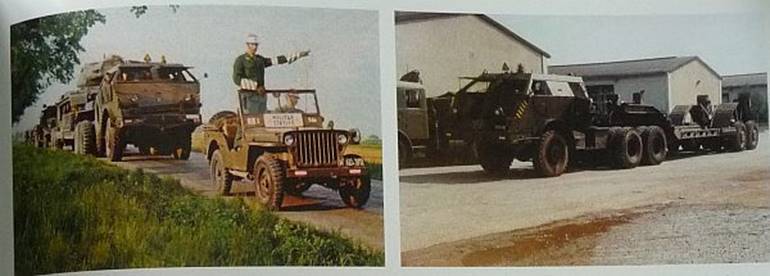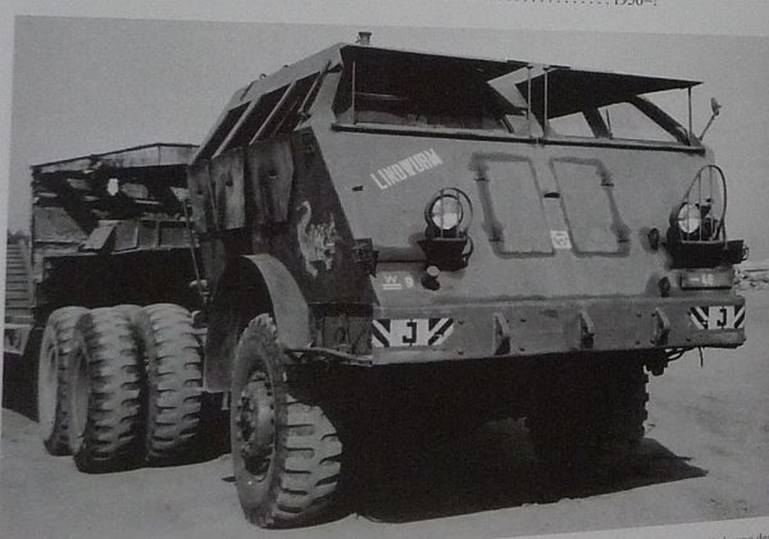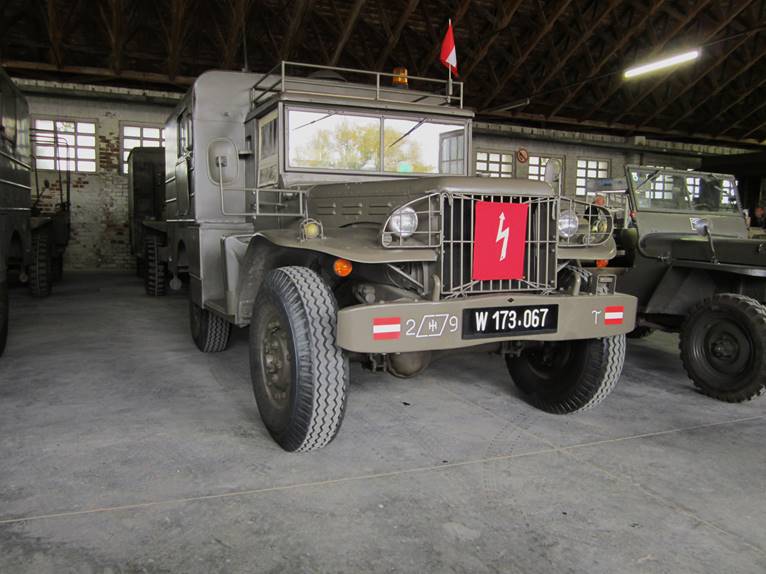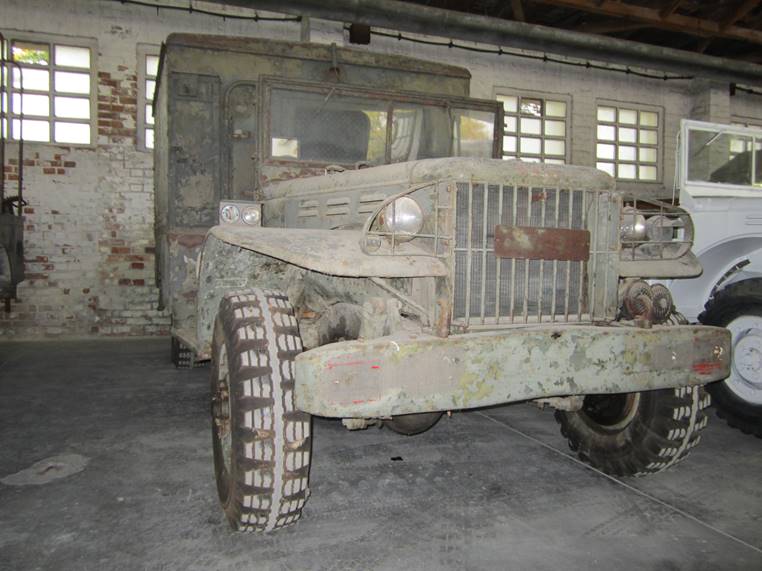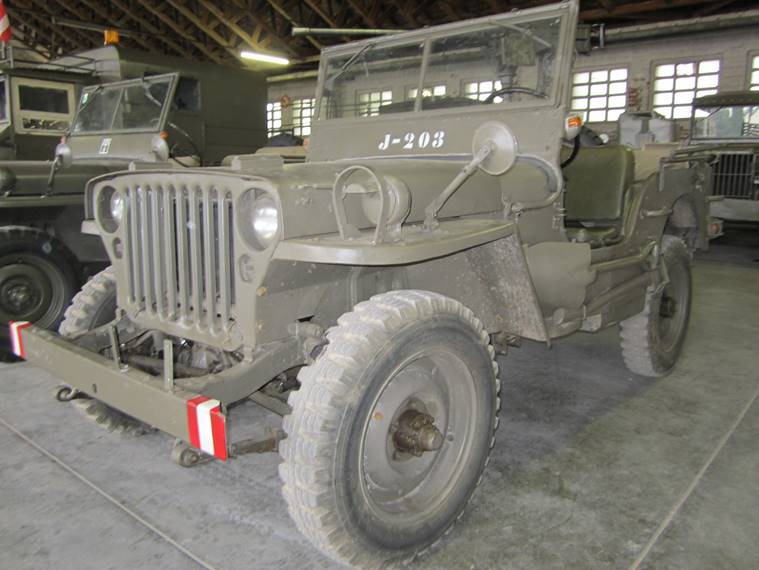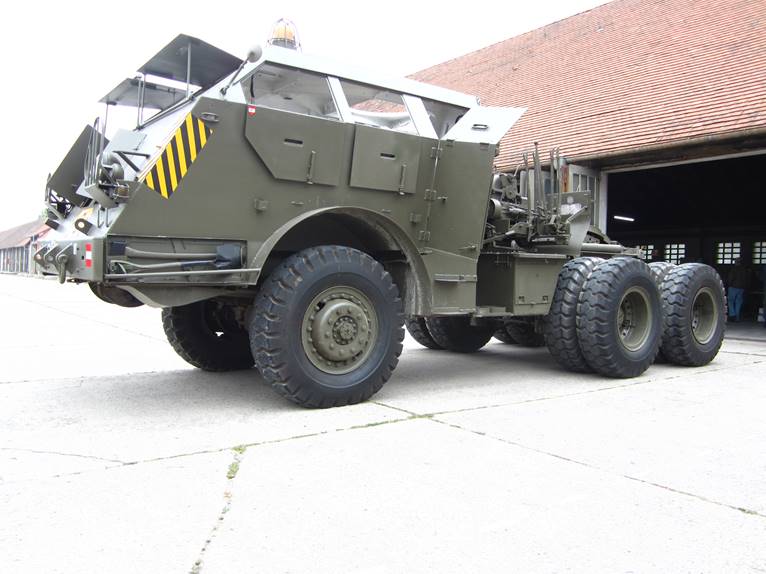Together with the Museum of Military History in the Vienna Arsenal, on October 12 2012 the Traditionsverband presented US vehicles as they were in service with the re-established Austrian Army in the years immediately after WW2. The event was held at the Martinek Barracks in Baden, the location of the Motorization Institute (HLogS/KFW). More than 20 vehicles documented Army motorization as it was based on US equipment left behind after the departure of allied occupational forced in 1955. Starting with the light Willys Jeeps and Dodge WCs all the way to GMC CCKW and the “heavies” Diamond and Ward LaFrance, our visitors really got a first-hand look at “what kept the Army rolling” in those years.
Star of the presentation was the M26 “Pacific” (or “Tatzelwurm” as it was called by the Austrian Army, loosely translating the original “Dragon Wagon” theme), a vehicle out of the Museum’s collection that had just undergone complete refurbishing. Unfortunately, by late 2012 the coming demise of the Baden Garrison had already been decided, and just a year later the doors of the Martinek Barracks closed forever.
With the departure of the allied occupational forces, a large number of vehicles were handed over to the re-established Austrian Army and constituted the core of Army motorization for the next decade. In 1942, the US Army had asked for a tank transport system with a higher payload than the existing M9 low-loader trailers. Fruehauf in Detroit developed the fifth-wheel trailer M15 that could carry up to 80000 lbs, a corresponding tractor was developed by the Knuckey Truck Company in San Francisco – the M26. It was powered by an inline, 6-cylinder gasoline engine, producing 240 HP from its 17.88-liter volume. The whole system of M26 tractor with M15 trailer was designated as the M25 tank transporter.
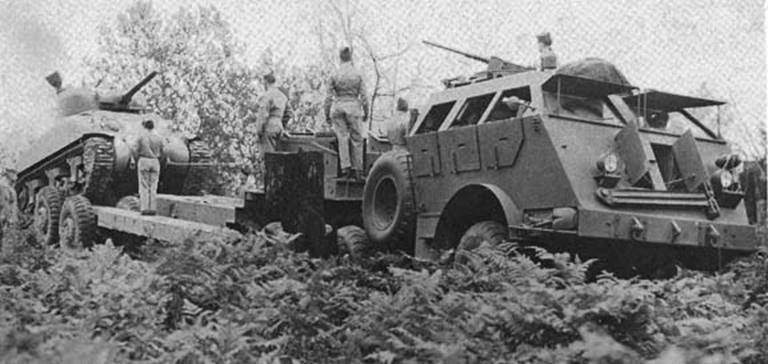
Achieving a top speed of 45 km/hr, the M26 was slightly faster than its predecessor M20 “Diamond”, however the massive fuel consumption of the large gasoline engine (about 250 l per 100 km) required extensive logistical support when operating the vehicle over longer distances. Because of Knuckey’s limited production capacity, production of the vehicles was later moved to the Pacific Car and Foundry Company in Seattle, hence the nickname “Pacific”.
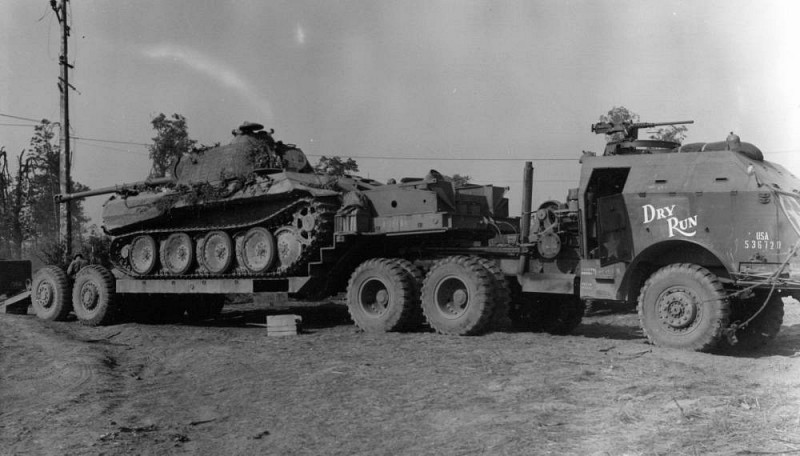
The M26 was equipped wit a lightly armored cab and two mechanically-driven 30-ton recovery winches. In the Austrian Army these systems saw service with the tank battalions until the mid-1960s when they were replaced by the Austrian-manufactured Gräf & Stift ZAFD 230/36 with ARPA trailers.
